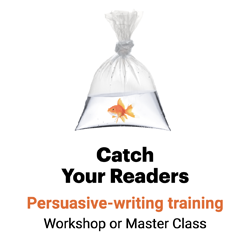The traditional news structure fails readers
If I told you there was a communication tool that reduces readership, diminishes understanding and causes engagement to take a nosedive, would you use it?

Friends, there is such a tool, and I am afraid you are using it every day. It’s called the inverted pyramid. And, according to “Ways With Words,” a classic study by the American Society of Newspaper Editors, it does “not work well with readers.”
The problem with the pyramid
“Ways With Words” researchers studied four story structures and found that traditional, inverted-pyramid stories:
- “Do not work well with readers,” and “did not justify their predominance in today’s newspapers.”
- Scored low in readership and understanding.
- Made a mediocre showing in “involvement,” or whether the story made readers care about the news. (In our business, we call this “engagement.”)
- Were the least effective at getting the reader to the jump of all story forms studied.
Researchers identified two problems with the inverted pyramid:
- “The story gets more boring as the reader reads down.”
- “Journalists put background and context in the second half of the pyramid, so the reader who does not know that background cannot understand the top of the story. As a result, only journalists and sources can fully understand inverted-pyramid stories.”
Why are we still using this thing?
Back away from the pyramid.
Instead of sticking with a story form that’s been proven in the lab not to work, you’d think writers would experiment with other story structures. But, the researchers lamented:
Amen.

Ann Wylie, I am an avid reader of your blogs and find them to be, for the most part, right on. I agree with this blog’s assessment of the pyramid style of writing with one caveat: Feature leads can be laboriously long before “getting to the point,” i.e. answering the reader’s question: Why should I read this? I favor feature leads as long as the point of the story is encapsulated high up in a “nut graph,” as we call it in the newspaper business, which gives the story a sharp context around which the feature lead is fashioned. That’s my humble ten cents on the topic from 15 years in the news reporting business and 23 years in business communications.
Hi Ed. Good to hear from you here.
Agreed: In fact, it wouldn’t be a feature story structure without a nut graph. And the solution to laborious leads is simple: Don’t write them.
But the research from two significant studies is in, and the pyramid lost. Yet, we remain married to a structure that’s been proven in the lab “not to work with readers.” It’s time we mastered the feature-style story structure (complete with nut graph!) and started writing stories that people want to read instead of just the stories that we’re used to writing.